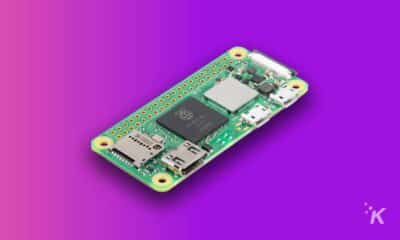Tech
What you need to know about Wi-Fi 6
Whilst it may sound like something from the distant future, Wi-Fi 6 is readily available now

With businesses becoming more and more reliant on internet-connected devices, having high-speed and reliable Wi-Fi is now critical for success.
From VoIP phones and laptops to mobile devices and messaging / video conferencing apps; the modern workplace revolves around a need for a fast and stable internet connection.
In environments such as hotels, restaurants, and guest houses, failing to offer reliable Wi-Fi can result in dissatisfied customers and cause you to miss out on sales.
Wi-Fi 6 is the latest technology upgrade to Wi-Fi that can dramatically increase network speeds and provide consistently high performance regardless of how many devices are connected.
In this article, we take a look at what Wi-Fi 6 is, how it can benefit businesses, and how it compares to the traditional Wi-Fi technology that most businesses and homes rely on.
What Is Wi-Fi 6?
Wi-Fi 6 (802.11ax, if we’re getting technical) is the next generation of Wi-Fi that has been widely available to businesses and residential premises since 2019.
Wi-Fi 6 is a backward-compatible upgrade to traditional Wi-Fi which comes with a multitude of additional technologies to improve performance and allow routers to operate more efficiently.
When using the new technology, routers have a significantly higher theoretical maximum of speed vs. its predecessor, Wi-Fi 5. Whilst the theoretical maximum speed is ever likely to be reached; it can be split up between multiple devices.
As a result, Wi-Fi 6 can offer improved performance where multiple devices are relying on the same internet connection, this makes it ideal for businesses where several people are using the Wi-Fi connection at once.
What Are The Benefits of Wi-Fi 6 To Businesses?
Wi-Fi 6 offers a number of benefits to businesses and households including:
- Faster loading speeds – say goodbye to buffering
- Increased access point capacity – better connection for more devices
- High performance that allows for streaming in 4K and 8K
- Target wake up time functionality – uses scheduling to reduce interference from connected devices that aren’t being used; this also extends the battery life of devices
- Backward compatible – most modern devices are now able to use Wi-Fi 6 without requiring upgrades or replacements
WiFi 6 vs Older Versions
Here’s how Wi-Fi 6 compares with its predecessor, Wi-Fi 5 on the issues that matter to businesses.
| Wi-Fi 6 | Wi-Fi 5 | |
| Speed | Maximum throughput of 9.6 Gbps | Maximum throughput of 3.5Gps |
| Component Streams | 12 – more streams equals higher potential connection speed | 8 |
| Number of Connected Devices | With a new feature called orthogonal frequency division multiple access (OFDMA), your router will be able to serve multiple devices at once within a single channel | Wi-Fi 5 routers can serve multiple devices but less efficiently and will slow down based on the number of devices being used |
| Target Wake Up Time | Wi-Fi 6 routers use target wake up times to schedule when devices wake up and report information. This saves battery and reduces interference on the network | No target wake up time functionality is available |
How Do I Get Wi-Fi 6?
Whilst it may sound like something from the distant future, Wi-Fi 6 is readily available now from leading providers for businesses and consumers across the USA.
To get Wi-Fi 6, you’ll need to ensure that you have a device and router that supports it; most new devices are Wi-Fi 6 ready, and backward compatibility means that you may even be able to benefit from Wi-Fi 6 without the need to upgrade.
For businesses who are ready to leverage the power of Wi-Fi 6, it is best to speak with a professional IT company that will be able to get your business set up with a Wi-Fi 6 router and ensure that all your connected devices are Wi-Fi 6 compatible.
Have any thoughts on this? Let us know down below in the comments or carry the discussion over to our Twitter or Facebook.
Editors’ Recommendations:
































